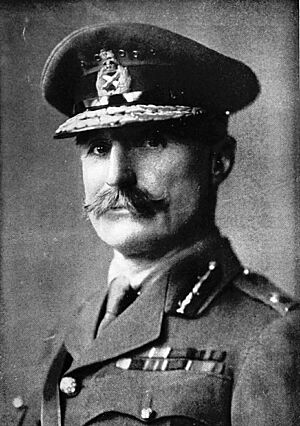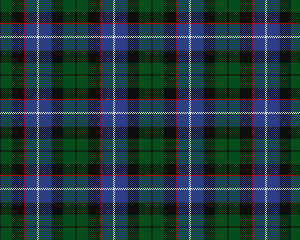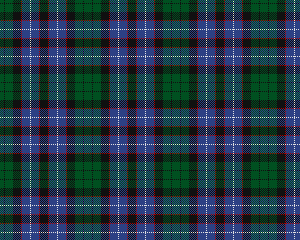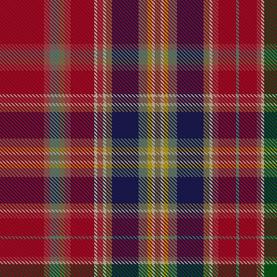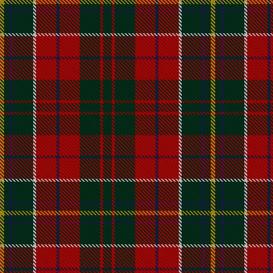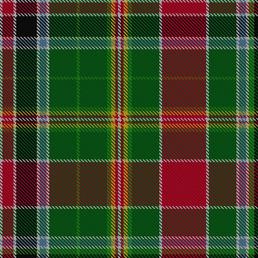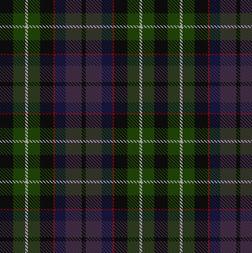Clan Hunter facts for kids
Quick facts for kids Clan Hunter |
|||
|---|---|---|---|
| Clann an t-Sealgair (clan), Mac an t-Sealgair (surname) | |||

Crest: A greyhound sejant Proper, gorged with an antique crown
|
|||
| Motto | Cursum perficio (Latin) - I have completed the course | ||
| War cry | Haud at Hunds o Hunterston | ||
| Profile | |||
| Region | Scottish Highlands and Scottish Lowlands | ||
| District | Ayrshire, Isle of Arran, The Cumbraes | ||
| Plant badge | Sea Pink, Armeria Maritima | ||
| Animal | Braque Dupuy | ||
| Pipe music | Hunters March | ||
| Chief | |||
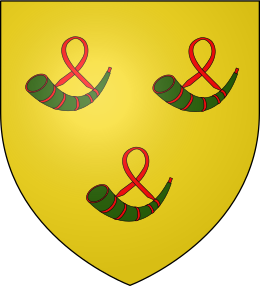 |
|||
| Pauline Natalie Hunter of Hunterston, | |||
| Chief of the Name and Arms of Hunter and 30th Laird of Hunterston.Praefectus Venatorus Regis. | |||
| Seat | Hunterston. | ||
| Historic seat | Hunterston Castle. | ||
| Last Chief | Neil Aylmer Hunter of Hunterston | ||
| Died | 14 October 1994 | ||
|
|||
Clan Hunter is a historic Scottish clan with roots stretching back many centuries. A clan is a group of families who share a common ancestor and a strong sense of identity. The Hunters are known for their long history in Ayrshire, Isle of Arran, and The Cumbraes. Their name, "Hunter," comes from their traditional role as royal hunters and keepers of the king's forests.
Contents
History of the Clan Hunter
How the Clan Began
The Hunter family likely came to Scotland with David I of Scotland. He invited many people to Scotland. They were given lands called Hunter's Toune.
In 1296, a man named Aylmer le Hunter from Ayr signed the Ragman Rolls. This was a document where Scottish nobles promised loyalty to Edward I of England.
A special paper, called a charter, was signed by Robert II of Scotland in 1374. It gave land to William Hunter. This was for his "faithful service." He had to pay the king a silver penny each year. This payment happened at Hunterston on a day called Pentecost. Even today, the current chief of Clan Hunter keeps old silver pennies ready. This is in case a king or queen visits on the payment day. William Hunter was the tenth Hunter of Hunterston. Early records show William and Norman Hunter used the Latin name Venator, which means "hunter."
The 1400s and 1500s
By the 1400s, the Hunters were hereditary keepers of the royal forests. These forests were on the Isle of Arran and Little Cumbrae. The family had held this important job for a long time. They also claimed to have ancestors who did similar jobs in England and Normandy.
In the 1500s, the Hunters were known for their military service. John Hunter, the fourteenth Laird (clan chief), died fighting for his king. This happened at the Battle of Flodden in 1513. His son, Robert, was too sick to fight in 1542. So, James V of Scotland allowed Robert's eldest son, Mungo, to go in his place. Mungo was later killed at the Battle of Pinkie Cleugh in 1547.
The 1600s
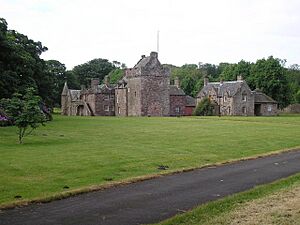
After these battles, later generations of Hunters were more peaceful. They focused on managing their estates and caring for their tenants. Robert Hunter, a son of the twentieth Laird, studied at the University of Glasgow in 1643. He became a minister in West Kilbride. He bought land and started a new branch of the clan, the Hunters of Kirkland.
Another famous Hunter was a grandson of the twentieth Laird, also named Robert Hunter. He served under a famous general, Marlborough. Robert Hunter later became the Governor of Virginia. He also served as Governor of New York.
The 1700s and 1800s
The Hunter family faced money problems in the early 1700s. But another Robert Hunter, a younger son, took over the estate. He managed it very well and solved the financial issues. His daughter, Eleanora, inherited the estate. She married her cousin, Robert Caldwell. He took the Hunter name. Together, they improved the estate and built the current Hunterston House. Their son had two daughters, Jane and Eleanor.
The 1900s
Jane Hunter-Weston passed away in 1911. Her son, Lieutenant General Sir Aylmer Hunter-Weston, became the next Laird. He was a very important military leader. He served in the Egyptian War in 1896. He also fought in the Boer Wars. During World War I, he was a divisional officer for the British Expeditionary Force. He also led troops during the Gallipoli landings. Later, he commanded the 8th Army on the Western Front.
Modern Clan Activities
As times became more peaceful, the Hunters spent more time farming their large lands. However, they still produced many distinguished soldiers. Gould Hunter-Weston, who was married to Jane Hunter-Weston (the 26th Laird), fought in India in 1857. Their oldest son, Aylmer (the 27th Laird), was a well-known general in the First World War. He also became a Member of Parliament for North Ayrshire.
Eleanora, the 28th Laird and Clan Chief, fought in court. She tried to stop the government from taking land at Hunterston. They wanted to build a nuclear power station there, but she lost the case.
The last Clan Chief, Neil Hunter of Hunterston, and his wife Sonia, continued the fight against industrial development. Neil was also a very skilled sailor. He represented the United Kingdom in two Olympic Games. He won a silver medal at Melbourne in 1956. Like many Hunters before him, he was also an expert in archery.
Clan Chiefs
Lady Pauline Hunter of Hunterston is the 30th Laird and Chief of Clan Hunter. Her ancestor from the mid-1800s was known for helping her community. She tried to improve the lives of her neighbors in West Kilbride. Her husband, the Laird of Hunterston, encouraged his tenants to improve their farm animals.
Clan Seat and Castle
The main home of the chief of Clan Hunter has been Hunterston Castle for over 800 years. It is a very old and important place for the clan.
The Royal Charter
William Huntar, the 10th Laird, received a special document called a Royal Charter. It was given by King Robert II of Scotland in 1374. This charter was for William's loyal service to the king. The original charter, with the king's seal, is still kept at Hunterston Castle. It is the oldest document owned by the Hunter Family.
The charter officially gave William Hunter the land of Arnell. It stated that he and his male heirs would hold this land from the Crown. They would pay one silver penny each year at Pentecost. This payment was a symbolic rent. The charter ensured the Hunter family's right to their land.
Robert, by the grace of God, King of Scots, to all good men of his whole land, clerics and laymen, Greeting: Know ye that we have given, granted and by this our present charter have confirmed to our loved and faithful WILLIAM HUNTER, for his faithful service rendered and to be rendered to us, that whole land of ARNELL with pertinents... To hold and have to the said William and his heirs male lawfully procreate or to be procreated of his body of us and our heirs in fee and heritage... The said William and his heirs foresaid rendering therefor yearly to us and our heirs one penny of silver only at the said land of Arnell at the feast of Pentecost in name of "blench ferme" for wards, reliefs, marriages, burdens and other services whatsoever. In testimony of which thing we have commanded our seal to be appended to our present charter. WMtnesses, the venerable father in Christ, William Bishop of St. Andrews; John our firstborn Earl of Carryk, Steward of Scotland; Robert Earl of ffyff and of Meneteth, our beloved son; William Earl of Douglas; John of Carryk our Chancellor; James of Lyndesay our nephew; and Robert of Erskyne; Knights. At Strivelyne (Stirling) the second day of May the fourth year of our reign (i.e. 1374).
Clan Tartans
The main Clan Hunter tartan was created in 1983. It is called "Hunter of Hunterston." This helps tell it apart from other Hunter tartans. Different Hunter families or groups have their own unique tartans.
| Image | Tartan Name | Notes |
|---|---|---|
| Hunter Mitchel Galbraith Shared | This tartan is shared by four families: Hunter, Russell, Mitchell, and Galbraith. It was adopted by the United States Air Force pipe band. | |
| Hunter of Bute | This tartan is mentioned in official records from 1991. | |
| Hunters of Peebleshire | This tartan is believed to be worn by Hunters from Peebleshire and other areas. It is sometimes called 'Old Hunter'. | |
| Hunter | This is a modern version of an older Hunter tartan. | |
| Hunter (1775) | This tartan was given to the Scottish Tartans Authority in 2003. It is a very old piece of fabric, possibly from 1775. | |
| Hunter (USA) | This tartan has slightly changed colors (red and blue reversed) for some Clan Hunter members in the USA. | |
| Hunter (Wilson) | The Chief chose this as a "second clan tartan." It gives clan women another choice for clothing. It was officially registered in 1991. | |
| Hunter Graham | This tartan was created to celebrate a wedding. It combines patterns from the Graham of Montrose and Hunter tartans. |
Images for kids
See also



